
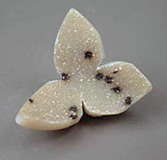
The word "druse" refers to a rock surface (usually a cavity) covered with tiny individual crystals, such as are found inside geodes or in larger pockets of mineral deposits. Gem minerals which exhibit this feature are said to have a drusy crystal "habit". Until about 10 years ago, drusy minerals were little more than a curiosity, of interest to serious mineralogists, but unnoticed by jewelry designers, gem collectors, and the general public. Times have changed! Drusy materials, at first slowly, then with increasing frequency appeared in the work of noted gem carvers and jewelry designers and, as a result, gained space in gem and jewelry publications.


By far the most commonly found drusy is quartz (agate or chalcedony), but many other species can exist in this form. A non-exhaustive internet search yielded the following types: chrysocolla, uvarovite garnet, rainbow pyrite, rainbow hematite, psilomelane, cobalto-calcite, calcite, dolomite, sphalerite, melanite garnet, demantoid garnet, azurite, dioptase, siderite, vanadinite and turquoise. There was even a notation about a drusy pocket found in an iron meteorite!

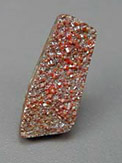
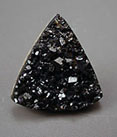
The appeal of drusy material is easy to understand with its multitude of tiny crystals providing a reflective surface reminiscent of sugar or snow. Most non-quartz species of drusy gems, even those with vivid colors like hot pink (cobalto-calcite), day glow green (uvarovite), or multi-color (rainbow pyrite ) are natural.
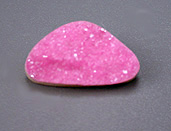
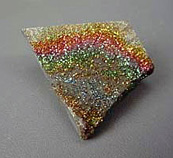
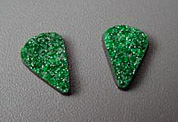
Naturally colored quartz drusy is found almost exclusively in muted colors such as white, grey, tan and cream. Many quartz pieces, though, are dyed black or other vivid colors such as purple, red, green and blue, and some are coated with titanium or other metallic vapor which creates various iridescent finishes.
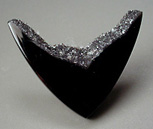
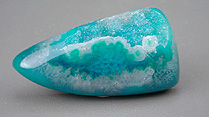
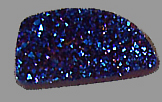
The toughness of each drusy piece depends on the nature of the crystals themselves and the matrix to which they are bound. For example, quartz drusy is relatively durable while calcite drusy is fragile. Any drusy is probably more fragile than a single crystal of that same gem, as in addition to the usual worry of scratching or breaking, there is detachment of the tiny crystals from the matrix to be concerned about.
All drusies should be treated with some care: use them for pendants, brooches and earrings, but avoid use in rings or bracelets. Clean with a soft brush and soap rather than ultrasonics or steam. With these simple precautions drusy pieces can make a wonderful addition to your gem or jewelry collection.
In drusy gemstones, the size and evenness of crystal coverage are important determinants of quality. It could even be said that in addition to the usual 4 C's (color, cut, clarity and carat weight) of gem quality there is a 5th C: "coverage". The evenness with which the matrix is covered is a strong value point. Good drusies are relatively rare, especially in non-quartz species.